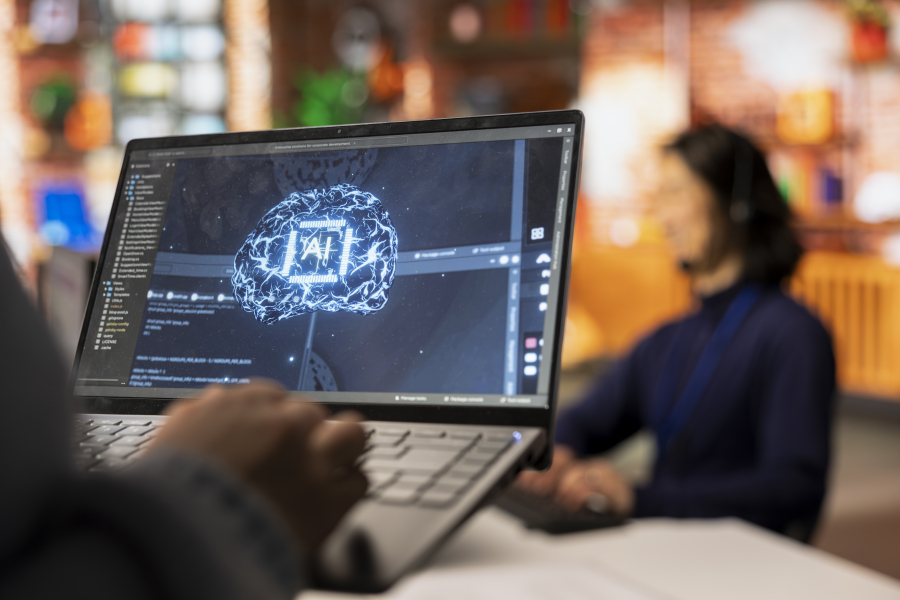How to Create a Strong Personal Brand as a Freelance Designer
In the competitive world of freelance design, standing out is essential to attract clients and build a successful career. Creating a strong personal brand is one of the most effective ways to differentiate yourself, showcase your unique style, and communicate your value to potential clients. For freelance designers, a well-crafted personal brand can lead to higher rates, better projects, and long-lasting professional relationships. In this article, FreelancerBridge will guide you through the essential steps to create a compelling personal brand that resonates with your target audience and elevates your freelance design business in 2025 and beyond.
Long Description
1. Understand What Personal Branding Means for Freelance Designers
Personal branding is more than just a logo or a website; it’s the overall perception clients have of you as a creative professional. It encompasses your visual identity, communication style, values, skills, and reputation. For freelance designers, it’s crucial to present a consistent and authentic image that reflects your personality and expertise.
Building a strong brand helps clients understand what you stand for and why they should choose you over others. Start by identifying your unique strengths, design style, and the kind of clients or projects you want to attract.
2. Define Your Unique Value Proposition (UVP)
Your Unique Value Proposition is the core of your personal brand. It answers the question: What makes you different from other freelance designers? Maybe you specialize in eco-friendly design, have a quick turnaround, or offer expertise in UX/UI design.
Write a clear and concise UVP that highlights your skills, experience, and what clients can expect when working with you. This statement should be incorporated into your portfolio, website, and social media profiles to consistently reinforce your brand message.
3. Create a Professional and Cohesive Visual Identity
Visual elements like your logo, color palette, typography, and website design play a crucial role in personal branding. As a graphic designer, this is your chance to showcase your style and professionalism.
Design a memorable logo that reflects your personality.
Choose colors that evoke the right emotions and align with your niche.
Use consistent typography across all platforms.
Build a clean, user-friendly website or portfolio that highlights your best work and makes it easy for clients to contact you.
Consistency across all touchpoints strengthens your brand recognition.
4. Build a High-Quality Online Portfolio
Your portfolio is your strongest marketing tool. Curate your best projects that not only showcase your skills but also demonstrate the type of work you want to attract. Include case studies or detailed descriptions that explain your design process and the results achieved.
Consider adding testimonials from satisfied clients to build credibility. Make sure your portfolio is easily accessible, mobile-friendly, and regularly updated with fresh work.
5. Leverage Social Media Strategically
Social media platforms are excellent channels to promote your personal brand and connect with potential clients and peers. Choose platforms that best suit your target audience—Instagram and Behance for visual portfolios, LinkedIn for professional networking, and Twitter for industry conversations.
Share your design process, completed projects, tips, and industry news to position yourself as an expert. Engage with other creatives and potential clients by commenting, collaborating, and participating in relevant groups or communities.
6. Network and Collaborate Actively
Building a personal brand is not just online — offline interactions matter too. Attend design conferences, workshops, webinars, and local meetups to expand your network. Collaboration with other freelancers or agencies can open doors to new opportunities and enhance your reputation.
Remember, word of mouth is powerful in the freelance world. Positive client relationships and professional behavior contribute heavily to your brand image.
7. Develop Your Brand Voice and Story
Your brand voice is how you communicate your message—whether it’s friendly, professional, humorous, or authoritative. Decide on a tone that reflects your personality and resonates with your ideal clients.
Tell your story authentically. Share why you became a freelance designer, your passions, challenges you’ve overcome, and what inspires your work. A compelling story humanizes your brand and builds emotional connections.
8. Offer Value Through Content Creation
Content marketing is a powerful way to build authority and attract clients organically. Start a blog, YouTube channel, or podcast where you share insights, tutorials, design trends, and freelancing tips.
Providing valuable content positions you as a knowledgeable resource, increases your visibility, and improves your website’s SEO. Consistency is key—commit to regular posting to keep your audience engaged.
9. Maintain Professionalism and Reliability
Your reputation is the backbone of your personal brand. Always deliver high-quality work on time, communicate clearly with clients, and manage expectations honestly.
Professionalism in every interaction reinforces trust and encourages repeat business and referrals. Respond promptly to inquiries and handle feedback gracefully to strengthen your brand image.
10. Continuously Evolve and Adapt Your Brand
The design industry and freelance marketplace are always evolving. Regularly evaluate your personal brand to ensure it remains relevant and aligned with your career goals.
Seek feedback from clients and peers, track your brand’s performance, and be open to refining your brand identity, portfolio, and marketing strategies. Growth and adaptability demonstrate your commitment to excellence and innovation.
Why Building a Strong Personal Brand Matters on FreelancerBridge
Attract High-Quality Clients: A strong brand helps clients find and trust you, leading to better project opportunities.
Command Higher Rates: Clients pay more for designers who have a professional and distinct brand identity.
Increase Referrals and Repeat Business: Memorable brands generate word-of-mouth and client loyalty.
Differentiate Yourself in a Crowded Market: Personal branding sets you apart from the competition and defines your niche.
Build Long-Term Career Sustainability: A well-established brand opens doors to diverse projects and collaborations.
FreelancerBridge supports freelance designers by connecting them with clients who value creativity and professionalism. By investing in your personal brand, you build a foundation for success and growth in the freelance design world.


 by Emily
by Emily




